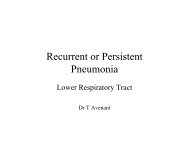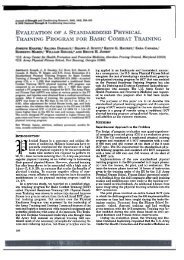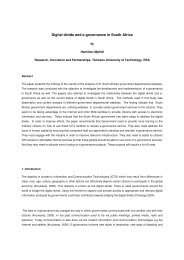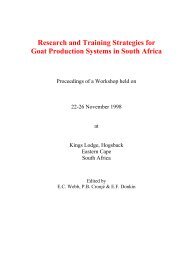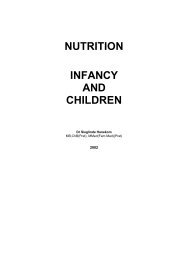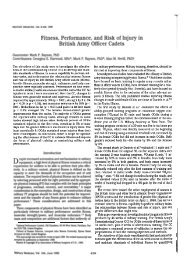An introduction to power and sample size estimation
An introduction to power and sample size estimation
An introduction to power and sample size estimation
You also want an ePaper? Increase the reach of your titles
YUMPU automatically turns print PDFs into web optimized ePapers that Google loves.
458 Jones, Carley, Harrison<br />
CONCLUSION<br />
Sample <strong>size</strong> <strong>estimation</strong> is key in performing effective<br />
comparative studies. <strong>An</strong> underst<strong>and</strong>ing of the concepts of<br />
<strong>power</strong>, <strong>sample</strong> <strong>size</strong>, <strong>and</strong> type Ι <strong>and</strong> ΙΙ errors will help the<br />
researcher <strong>and</strong> the critical reader of the medical literature.<br />
QUIZ<br />
(1) What fac<strong>to</strong>rs affect a <strong>power</strong> calculation for a trial of<br />
therapy?<br />
(2) Dr Egbert Everard wants <strong>to</strong> test a new blood test (Sithtastic)<br />
for the diagnosis of the dark side gene. He wants the test<br />
<strong>to</strong> have a sensitivity of at least 70% <strong>and</strong> a specificity of 90%<br />
with 5% confidence levels. Disease prevalence in this population<br />
is 10%.<br />
– (i) How many patients does Egbert need <strong>to</strong> be 95% sure<br />
his test is more than 70% sensitive?<br />
– (ii) How many patients does Egbert need <strong>to</strong> be 95% sure<br />
that his test is more than 90% specific?<br />
www.emjonline.com<br />
Downloaded from<br />
emj.bmjjournals.com on 28 July 2005<br />
(3) If Dr Everard was <strong>to</strong> trial a new treatment for light sabre<br />
burns that was hoped would reduce mortality from 55% <strong>to</strong><br />
45%. He sets the pα <strong>to</strong> 0.05 <strong>and</strong> pβ <strong>to</strong> 0.99 but finds that he<br />
needs lots of patients, so <strong>to</strong> make his life easier he changes the<br />
<strong>power</strong> <strong>to</strong> 0.80.<br />
(i) How many patients in each group did he need with the<br />
pα <strong>to</strong> 0.05 <strong>and</strong> pβ <strong>to</strong> 0.80?<br />
(ii) How many patients did he need with the higher (original)<br />
<strong>power</strong>?<br />
Quiz answers<br />
(1) See box.<br />
(2) (i) 2881 patients; (ii) 81 patients<br />
(3) (i) about 400 patients in each group; (ii) about 900<br />
patients in each group<br />
ACKNOWLEDGEMENTS<br />
We would like <strong>to</strong> thank Fiona Lecky, honorary senior lecturer in emergency<br />
medicine, Hope Hospital, Salford for her help in the preparation<br />
of this paper.<br />
.....................<br />
Authors’ affiliations<br />
S R Jones, North Manchester Hospital, Manchester, UK<br />
S Carley, Royal Bol<strong>to</strong>n Hospital, Bol<strong>to</strong>n, UK<br />
M Harrison, North Staffordshire Hospital, UK<br />
REFERENCES<br />
1 Driscoll P, Wardrope J. <strong>An</strong> <strong>introduction</strong> <strong>to</strong> statistics. J Accid Emerg Med<br />
2000;17:205.<br />
2 Gore SM, Altman DG. How large a <strong>sample</strong>. In: Statistics in practice.<br />
London: BMJ Publishing, 2001:6–8.<br />
2 Buderer NM. Statistical methodology: I. Incorporating the prevalence of<br />
disease in<strong>to</strong> the <strong>sample</strong> <strong>size</strong> calculation for sensitivity <strong>and</strong> specificity.<br />
Acad Emerg Med 1996;3:895–900.








